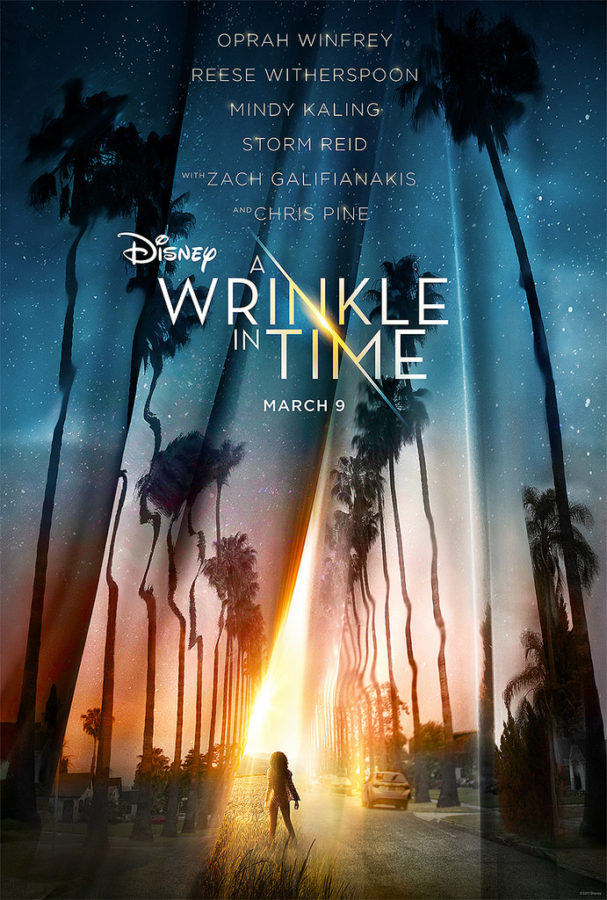Based off the original novel by Madeleine L’Engle, the plot follows tween Meg Murry as she struggles with the aftermath of her father’s sudden and mysterious disappearance. He had been an astrophysicist who believed in the time-traveling phenomena of the tesseract. Meg’s peers taunt her for her “crazy” father and Meg begins lashing out. Her adopted brother, Charles Wallace, faces similar bullying, which is only exacerbated by his borderline genius intelligence and lofty vocabulary.
One night, Charles Wallace lets into the house a strange-looking woman, Mrs. Whatsit, who mentions the tesseract and suggests the kids’ father is still alive. Soon after, the children meet Mrs. Who and Mrs. Which, other magical astral beings. The three women claim to be warriors of light sent to answer a call from Earth: Meg’s desire to find her father. They also reveal that the Camazotz, an evil entity of darkness, has been spreading throughout the universe and will soon dominate Earth. Together, they use tesseracts to embark on a hunt for Meg’s father. One of Meg’s peers, Calvin O’Keefe, also joins the adventure.
A truly beautiful aspect of the movie is its diversity. The main character, Meg (Storm Reid) is a biracial black girl, Mrs. Which (Oprah Winfrey) is black and both Charles Wallace (Deric McCabe) and Mrs. Who (Mindy Kaling) are Asian. The reason behind the movie’s strong presence of people of color lies in its director, Ava DuVernay, a black woman. A Wrinkle in Time was the first live-action movie with a nine-digit budget to be directed by a woman of color. The film’s diversity allows more children of color to see themselves represented on the big screen. Specifically with Meg, they’ll see themselves as the dynamic driving force for positive change instead of as stagnant side characters.
Some critics of the movie point to the special effects as over-the-top. While such a claim is not entirely unfounded, I did not find the CGI to be distracting from the plot. Without intense CGI, how else is a universe beyond the Milky Way Galaxy to be portrayed? The usage of vivid colors and whimsical creatures adds to the aura of awe and excitement that the characters themselves experience, as they are just as wonderstruck as the audience. Since time-traveling is a prominent concept in the movie, why not have some fun constructing wacky faraway worlds?
In terms of plot pacing, the 109 minute duration has some irregularities. The first half of the movie passes more slowly than the second, but that can be attributed to the strong introduction and elaboration of the central characters and time travel. Without a gradual progression of ideas, the movie would have become too confusing and abstract to grasp. The second half of the movie truly passes quickly and packs an emotional punch, as Meg learns to stop doubting and belittling herself. During the climax of the movie, I went from teary-eyed to straight-up bawling. I’m not usually a big crier during movies, but this one truly touched my heart with its raw emotion. Especially with Meg’s young age, her displays of grief, desperation, and love draw forth a stronger reaction from viewers; she is mature beyond her years as a result of her father’s disappearance. I was riveted by her strength. By the end, I felt satisfied with the resolution and growth of the characters.
To me, the best part of the movie was that Meg’s growth and power did not stem from romantic love. The movie cliche I despite the most is the sudden acquisition of empowerment and endless optimism after finding a significant other. Especially with female characters, this is too often the case, solidifying the idea that women are only fulfilled with the adoration of a love interest (usually male). However, despite Calvin showing romantic interest in her, Meg does not let that influence her mission to find her father; she stays true to herself and her goals.
What truly transforms Meg is her faith in herself. She develops her own ideas and acts upon them, which ends up saving her and her friends’ lives multiple times. At the same time, she feels traces of doubt just like any human, which keeps her character grounded and believable. Ultimately, between the push and pull of faith and doubt, Meg chooses the former and, as a result, underscores the importance of self-acceptance and self-empowerment.
I truly enjoyed watching A Wrinkle in Time, not in spite of its unconventional characters, odd sci-fi concepts and eccentric special effects, but because of them. I gasped, laughed, and cried throughout the movie; it was beautiful.









